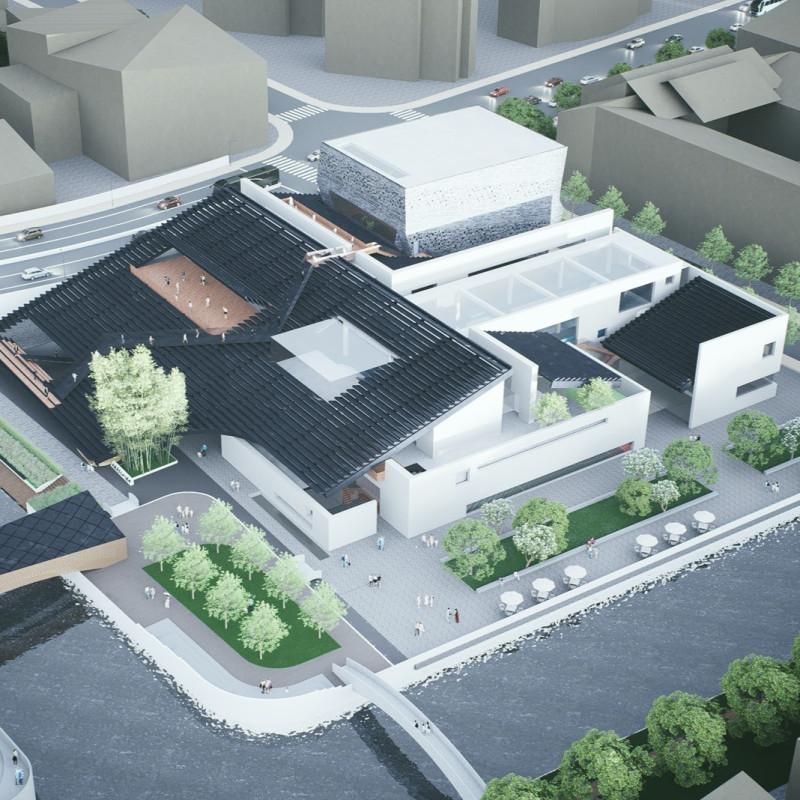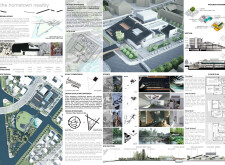5 key facts about this project
## Project Overview
Located in Fengxian, Shanghai, "The Hometown Nearby" is an architectural project that integrates urban development with the region's cultural and environmental characteristics. The design acknowledges the historical context of the area while addressing contemporary community needs through a multifaceted approach that combines traditional design elements with functional modernity.
## Spatial Organization and Connectivity
The site plan is characterized by a harmonious relationship between natural and constructed environments, thoughtfully allocating spaces that incorporate existing water systems. This integration enhances the connection between built forms and the landscape. Key components of the complex include a library, multifunctional hall, exhibition areas, dining facilities, and recreational spaces such as badminton and basketball courts, enabling a broad range of social interactions and fostering community engagement.
The spatial organization promotes clarity and connectivity, establishing distinct zones that facilitate movement while maintaining a coherent flow throughout the site. Pathways are strategically incorporated to enhance user exploration and interaction with both internal and external environments, reinforcing accessibility and a sense of community.
## Material Selection and Environmental Considerations
The choice of materials is integral to the design's aesthetic and structural philosophy, emphasizing durability and sensory experience. Concrete provides structural integrity, while glass enhances openness and natural illumination. Wood adds warmth and texture, particularly in facade cladding and interior finishes, and metal is utilized for roofing, delivering modern resilience.
This thoughtful material strategy not only complements traditional aesthetic values but also reflects contemporary architectural practices. Furthermore, the project demonstrates a commitment to environmental sustainability through the integration of water systems and green spaces, promoting ecological awareness in an urban setting. The design strategies, including the incorporation of varying spatial experiences, encourage user engagement with the landscape, reinforcing the project's relevance to its geographical context.


















































